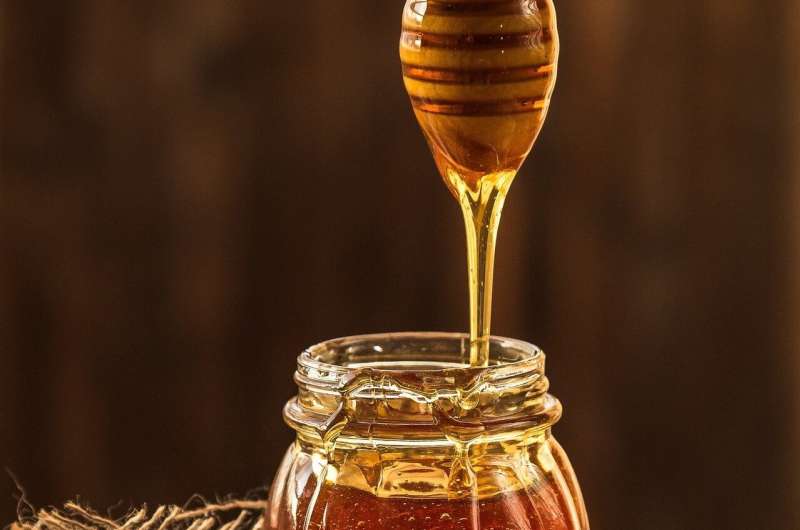Worrying long-term stability of pesticides in honey

Researchers from the University of Neuchâtel, Switzerland have developed an ultra-sensitive method to quantify extremely low concentrations of neonicotinoid pesticides in honey. This is a follow up to their study on the global contamination of honey by these pesticides published in the Journal Science in October 2017. The authors, which also include colleagues from the Botanical Garden of Neuchâtel, found that these pesticides did not degrade in honey over a period of 40 months. These results were published in the journal Environmental Pollution.
The long-term stability of these molecules is worrying: "if these pesticides are brought back to the hive with nectar, this implies that the entire colony, including the queen, is exposed during its entire life to these neurotoxins", points out Blaise Mulhauser, director of the Botanical Garden of Neuchâtel.
"Likewise, the concentration of these pesticides will be stable over a period of several years also in honey destined to human consumption", adds Edward Mitchell, co-author of the study. "So far only few samples had total neonicotinoid concentrations above the current limits accepted for human consumption. However, we do not know well what impact these substances have on human health over the long term, and this concern is growing."
The new method is a significant step forward and major feat in terms of analytical capacity for the Neuchâtel Platform of Analytical Chemistry led by the senior author of the study, Gaétan Glauser: This method now allows detecting concentrations as low as 2 picograms per gram of honey. This corresponds to the mass of a US quarter dollar coin in the mass of 5.6 Eiffel towers or 278 Statues of Liberty.
The up to 1000 fold increase in sensitivity as compared to previous methods now makes it possible to obtain a clearer picture of the environmental contamination by neonicotinoid pesticides. "Maximal concentrations allowed for human consumption are in the range of 50'000 pg/g while bees and other pollinators and beneficial insects are affected by concentrations as low as 100 pg/g. Although this concentration may seem extremely low, it still represents billions of molecules in the brain of a single bee", notes Edward Mitchell.
Four additional molecules not tested in the 2007 study (dinotefuran, nitenpyram, sulfoxaflor, and flupyradifurone) were found in 28% of the 36 samples analysed. "Dinotefuran and nitenpyram are not new substances, points out Gaétan Glauser. They are less used and less often measured, but to have a global image we wanted to have them on our list. Dinotefuran is not authorised in Switzerland but is used in the United States and in Japan. Nitenpyram is mostly used to treat animals. "
The inclusion of sulfoxaflor and flupyradifurone among neonicotinoids is currently debated. "The first scientific studies have shown that these molecules have the same effects as other neonicotinoids and share the same mode of action targeting nicotinic receptors of acetylcholine in the nervous system", explains Gaétan Glauser. "Rather than waiting 10 or 20 years to test their effects in an exhaustive way, it seems more reasonable to apply the precautionary principle and consider these new molecules as neonicotinoids."
More information: Souad Kammoun et al. Ultra-trace level determination of neonicotinoids in honey as a tool for assessing environmental contamination, Environmental Pollution (2019). DOI: 10.1016/j.envpol.2019.02.004
Journal information: Environmental Pollution
Provided by Université de Neuchâtel

















